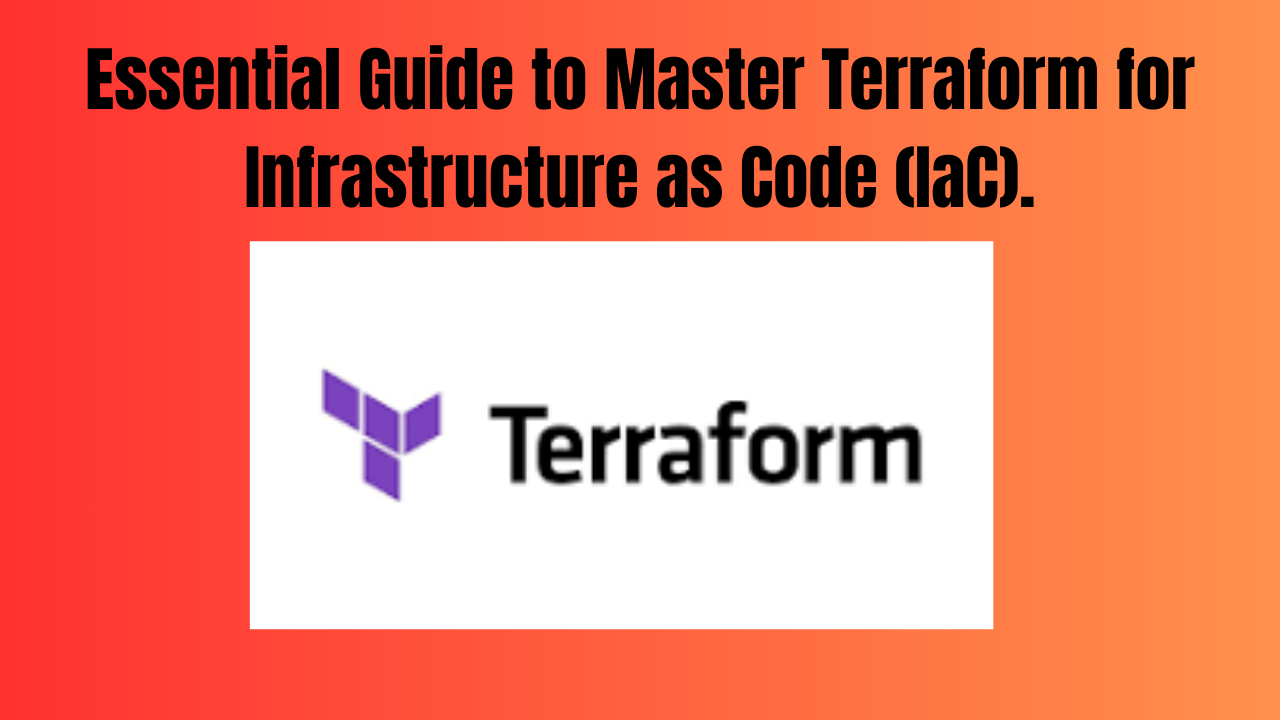Master Terraform for Infrastructure as Code: Essential Guide
 Gerald Chima (Triviawaves Media)
Gerald Chima (Triviawaves Media)
This roadmap provides a structured approach to learning Terraform, from the basics to advanced topics, ensuring a comprehensive understanding of the tool and its ecosystem.
Phase 1: Introduction and Basics
Introduction to Infrastructure as Code (IaC)
Understand the concept of IaC and its benefits.
Installing Terraform
Installation on different operating systems (Windows, macOS, Linux).
Setting up AWS/Azure Identity and Access Management - secret and ID keys. This is to help connect your IDE (VScode) with Terraform before starting configuration. Watch a YouTube.
Setting up a development environment (Visual Studio Code) with Terraform - VScode Terraform Extension
Basic Terraform Concepts
Understanding the Terraform Configuration Language (HCL).
First Steps with Terraform
Writing your first Terraform configuration.
Initializing a Terraform working directory (
terraform init).Creating and applying a Terraform plan (
terraform plan,terraform apply).Destroying infrastructure (
terraform destroy).
Phase 2: Intermediate Concepts
Terraform State Management
Understanding Terraform state.
Storing state files securely.
Remote state management with backends (e.g., AWS S3, Azure Blob Storage, Terraform Cloud).
Modules - Terrafrom Modules documentation.
Creating and using Terraform modules.
Organizing configuration with modules.
Using public modules from the Terraform Registry.
Variables and Outputs
Defining input variables.
Using variables in configurations.
Defining and using outputs.
Provisioners
Understanding provisioners and when to use them.
Using provisioners like
local-execandremote-exec.
Phase 3: Advanced Topics
Terraform Cloud and Enterprise
Overview of Terraform Cloud and Enterprise features.
Using Terraform Cloud for remote state management and collaboration.
Workspaces
- Using workspaces for managing multiple environments (e.g., dev, staging, production).
Advanced State Management
State locking and state environments.
Importing existing infrastructure into Terraform state.
Custom Providers
Writing custom providers.
Extending Terraform with plugins.
Phase 4: Best Practices and Real-world Usage
Terraform Best Practices
Code organization and structure.
Version control and collaboration.
Testing Terraform configurations.
Security and Compliance
Securing sensitive data.
Compliance and policy as code with Sentinel.
CI/CD Integration
Integrating Terraform with CI/CD pipelines.
Automating Terraform workflows.
Case Studies and Real-world Projects
Reviewing case studies of Terraform usage.
Implementing real-world projects.
Phase 5: Continuous Learning and Community Involvement
Keeping Up-to-date
Following the Terraform changelog and updates.
Participating in the Terraform community (forums, GitHub, Stack Overflow).
Certifications and Advanced Learning
Exploring advanced features and use cases.
Contribution
Contributing to Terraform open-source projects.
Writing blogs or creating tutorials to share knowledge.
Resources
Official Documentation: Terraform Documentation
Books:
- "Terraform: Up & Running" by Yevgeniy Brikman
Online Courses:
HashiCorp's Learn Platform
Coursera, Udemy, Pluralsight
Community:
HashiCorp Discuss Forums
Reddit: r/Terraform
Conclusion
Get ready to automate your infrastructure with ease! Start today with the comprehensive guide from Terraform experts.
Subscribe to my newsletter
Read articles from Gerald Chima (Triviawaves Media) directly inside your inbox. Subscribe to the newsletter, and don't miss out.
Written by

Gerald Chima (Triviawaves Media)
Gerald Chima (Triviawaves Media)
I'm a Software Developer passionate about AI, Serverless Cloud Computing, and Green Tech.